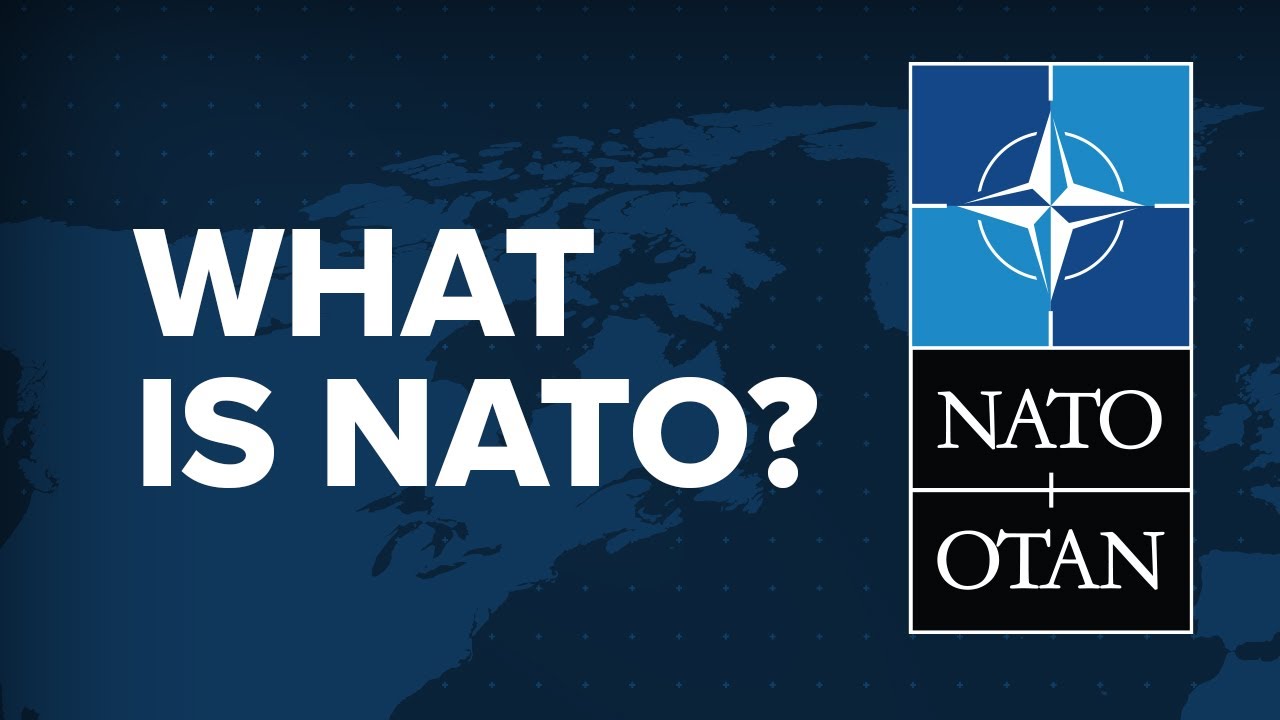NATO (1949-)
Summary
TLDRIn April 1949, NATO was established as a collective military alliance to counter Soviet aggression and prevent the spread of communism in Europe. Its founding members, including the U.S., Canada, and several European nations, pledged mutual defense in times of attack. NATO’s creation followed key events like the U.S. Marshall Plan, the Berlin Blockade, and Soviet expansion in Eastern Europe. The alliance’s military doctrine included the use of nuclear weapons as a deterrent, and over time, more countries joined NATO. In response, the Soviet Union formed the Warsaw Pact, further intensifying the Cold War tensions.
Takeaways
- 😀 NATO (North Atlantic Treaty Organization) was formed in April 1949 by Western powers to prevent Soviet aggression and avoid a repeat of nationalist militarism in Europe.
- 😀 The alliance's main goal was collective defense; if one member was attacked, others would come to its defense militarily.
- 😀 NATO's first Secretary General, Lord Hastings Lionel Ismay, famously said it was created to 'keep the Soviet Union out, the Americans in, and the Germans down.'
- 😀 NATO's formation was driven by various factors, including the need to contain Soviet expansion and the ongoing Berlin Blockade, which emphasized the urgency of military cooperation.
- 😀 The U.S. initiated the Marshall Plan to rebuild Western Europe and promote cooperation, while also providing a military presence to defend against Soviet threats.
- 😀 Twelve countries initially signed the North Atlantic Treaty in 1949: the United States, Canada, the United Kingdom, France, Belgium, Holland, Luxembourg, Norway, Iceland, Denmark, Italy, and Portugal.
- 😀 The formation of NATO allowed the U.S. to maintain a military presence in Europe and facilitated a doctrine of 'massive retaliation,' which involved using nuclear weapons as a last resort.
- 😀 The collective power of NATO served as a deterrent to the Soviet Union, showing that Western Europe would defend itself against Soviet aggression and expansion.
- 😀 NATO's creation also provided smaller countries with a sense of security, knowing that more powerful nations would defend them in case of an attack.
- 😀 The USSR's attempt to join NATO in 1954 was rejected due to fears of weakening the alliance, and in response, the Soviet Union formed the Warsaw Pact with its satellite states.
Q & A
What was the main purpose of forming NATO in 1949?
-The main purpose of forming NATO in 1949 was to stop Soviet aggression and prevent the rise of nationalist militarism in Europe by establishing a collective military alliance where member countries would defend each other if attacked.
Who was NATO's first Secretary General and what did he say about NATO's creation?
-NATO's first Secretary General was Lord Hastings Lionel Ismay, who famously stated that NATO was created to keep the Soviet Union out, the Americans in, and the Germans down.
Which countries were the founding members of NATO?
-The founding members of NATO, who signed the North Atlantic Treaty in 1949, were the United States, Canada, the United Kingdom, France, Belgium, Holland, Luxembourg, Norway, Iceland, Denmark, Italy, and Portugal.
How did the Berlin Blockade in 1948 contribute to the formation of NATO?
-The Berlin Blockade, where the Soviet Union cut off access to West Berlin, highlighted the urgency for collective defense and was a key factor that pushed for the formation of NATO to protect Western Europe from Soviet aggression.
What is the doctrine of 'massive retaliation' associated with NATO?
-The doctrine of 'massive retaliation' was a policy where NATO members, particularly the United States, would use nuclear weapons as a last resort against the Soviet Union in case of an attack.
What role did the U.S. military presence in Europe play in the formation of NATO?
-The U.S. military presence in Europe allowed for more immediate retaliation in case of a Soviet attack and helped ensure the defense of Western Europe against the growing Soviet threat.
Why was the Soviet Union's proposal to join NATO rejected in 1954?
-The Soviet Union's proposal to join NATO was rejected because NATO members feared that the USSR's motives were to weaken the alliance rather than contribute to its security.
What was the Warsaw Pact and why was it formed?
-The Warsaw Pact was a collective military alliance formed by the Soviet Union and its satellite states in Eastern Europe in 1955 in response to the entry of West Germany into NATO, further deepening the division between the Western bloc and the Eastern bloc during the Cold War.
How did NATO affect smaller countries in Europe?
-NATO provided security to smaller countries by ensuring that they would be defended by more powerful nations, thus making them less vulnerable to Soviet aggression.
When did France withdraw from NATO’s military command structure, and what was the reason?
-France withdrew from NATO's military command structure in 1966 due to concerns over NATO's influence and its military operations, but it remained a member of the NATO alliance.
Outlines

This section is available to paid users only. Please upgrade to access this part.
Upgrade NowMindmap

This section is available to paid users only. Please upgrade to access this part.
Upgrade NowKeywords

This section is available to paid users only. Please upgrade to access this part.
Upgrade NowHighlights

This section is available to paid users only. Please upgrade to access this part.
Upgrade NowTranscripts

This section is available to paid users only. Please upgrade to access this part.
Upgrade NowBrowse More Related Video
5.0 / 5 (0 votes)





